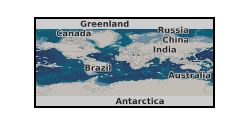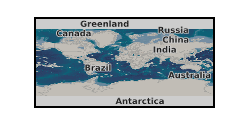Solubility
Type of resources
Topics
Keywords
Contact for the resource
Provided by
Years
Formats
Update frequencies
-

Solubility and kinetic data for Fe(II)-silicate precipitation over a range of temperatures, as well as metal drawdown and metal release during diagenesis. Characterisation data for solid precipitates using FTIR and XRD. The XRDML data should be opened on Panalytical highscore, and the XLS file should be opened with Excel, Numbers or OpenOffice. Paper currently under review ‘Micronutrient availability in ferruginous, silica-rich Precambrian oceans’, Rosalie Tostevin, Imad Ahmed
-

This dataset consists of a spreadsheet of data and a series of photographs. A set of natural phlogopite crystals were exposed to varying partial pressures of a He-Ne-Ar gas mixture at 930-1030°C for 20-161 hours to investigate the solubility of these gases in phlogopite. The experiments and analyses were carried out in 2013 and 2014. The experiments were carried out in piston cylinder apparatus at Brown University, USA by Dr Colin Jackson and the gas concentrations measured at the Open University, UK, by Dr Clare Warren. The NERC grant is NE/J013072/1.
-

This dataset contains experimentally derived measurements of sulfur solubility and speciation in silicate melts, obtained over a temperature range of 1200–1500 °C and a pressure range of 1 bar to 2.5 GPa. The experiments were conducted as part of the NERC-funded project NE/W000660/1 “The chemical behaviour of sulphur in magmas at high temperature and pressure” (2022–2025). For each experiment, the dataset includes the experimental run ID, silicate melt composition, and the experimental conditions under which the run was performed: pressure, temperature, oxygen fugacity (fO?), sulfur fugacity (fS?), and run duration. The dataset also provides raw electron microprobe analyses (EMPA) for each experiment, expressed as elemental weight percentage averages. These analyses represent individual point analyses collected from polished epoxy resin mounts coated with carbon. Measurements were acquired using wavelength-dispersive spectrometry (WDS) on a standard-calibrated electron microprobe. The data are intended to support investigations into the behavior of sulfur in magmatic systems, including solubility mechanisms, redox speciation, and compositional controls on sulfur partitioning between melts and other phases. The data was acquired and analysed by the experimental petrology team, at the University of Oxford, Department of Earth Sciences
 NERC Data Catalogue Service
NERC Data Catalogue Service